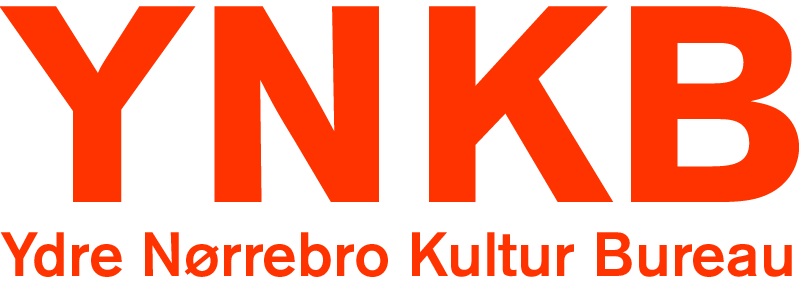Peoples Museum in Birzeit, Palestine

The idea is to create a “from bottom up” museum, which represents a collection of items, histories and memories of the residents in a specific locality in Palestine. The form, the site and the collected items are decided upon through a dialogue between the local residents, local grassroots organisations, art students and artists with connection to the specific locality and the Danish artist groups Parfyme-YNKB.
This project seeks a different approach to the concept of a museum.
It is about how people want to represent themselves.
Peoples Museum opened on
October the 9th 2009
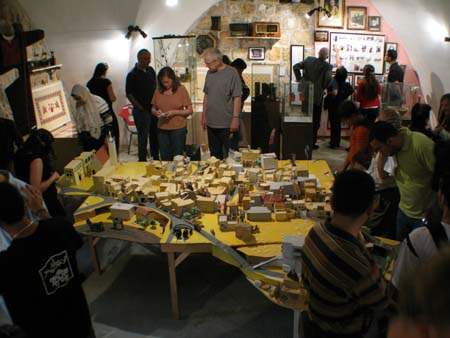
See Pictures from the Opening and the Peoples Museum exhibition
See also: Peoples Museum 1 and Peoples Museum 2
or Downloade Peoples Museum Flyer
Peoples Museum is an art project initiated by the Danish artgroups YNKB (Kirsten Dufour and Finn Thybo Andersen) and Parfyme (Pelle Brage Andersen and Laurids Sonn) in collaboration with Palestinian artists: Majdi Hadid, Hosni Radwan and Haneen Masri.
The main partner of Peoples Museum is IAAP – International Art Academy Palestine (Ramallah) and Al-Rozana in Birzeit.
Al Rozana is a local organization in Birzeit working for restoration of the old village and its revival.
IAAP International Art Academy of Palestine http://www.artacademy.ps is the Art Academy of Palestine. It is situated in Ramallah.
Funding
Peoples Museum in Birzeit is funded for two years 2008-2009 by the Danish Center for Culture and Development (DCCD) and the Danish Representation in Ramallah.
Where
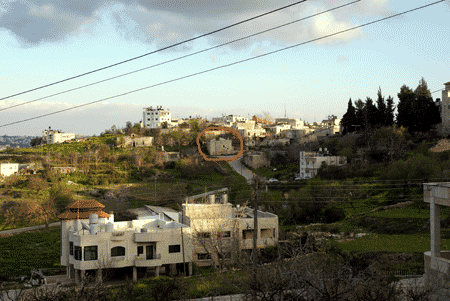
Birzeit is a village 20 km north of Ramallah, 780 meters above sea level. The population is estimated in 2008 to be 7764.
The historical area goes back to the Mamluk era originating in Egypt around 1250 AD.
The name Bir Zeit literally translates to “well of oil”; referring to the wells in which its inhabitants historically stored virgin-pressed olive oil.
The topography of the town consists of hills and sloping terrains with its highest point known by locals as “al-Khirbeh”, or “the ruin”, with ruins from the Roman and Byzantine era. Much of the surrounding land consists of olive trees, which historically was a source of sustenance for what was primarily an agrarian society. Today, BirZeit is a college town known for the flagship of Palestinian institutions, Birzeit University.

The old village of Birzeit consists of farmhouses build during the Ottoman period, (19th century) although there are building elements, that dates back to earlier periods. The traditional farmhouse is build of limestone with domes. It has two stores, the upper storey for human residents, the basement for livestock.
Traditionally the village of Birzeit was inhabited by five family groups, – four Christians and one Muslim, but they live together without any problems. Traditionally, families have lived together with their houses grouped around a yard. This is called al-Hoash. There are several examples of them in the old village of Birzeit.
Most of the houses in the old village are empty, and many of the beautiful old houses are in ruin. Many former residents have moved into modern houses in Birzeit. The residents in the old town are mostly refugees and students from the university, as the accommodation is cheap there.
The local organization Al-Rozana is working to restore and revitalize the old village. A few of the old houses are already restored. At the moment a great restoration of the old city of Birzeit is taken place, managed by RIWAQ, The municipality of Berzeit, Birzeit University and Al-Rozana.
History

In May 2008 Al-Rozana offered a restored empty house for the Peoples Museum: AL-Kailes House in the old Village of Birzeit.
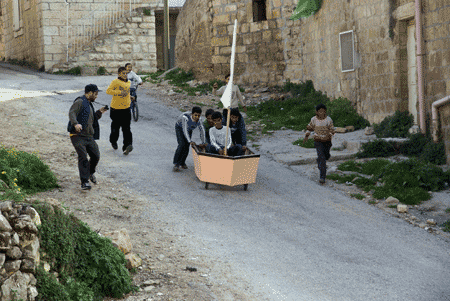
Soap Box Boat April 2009

Farmer planting an abricot tree while hes son is looking on. April 2009

Activity day April 13, 2009
Downloade the manual for the Activity day

Knoncking doors. Talking to residents. Collecting Artefacts.
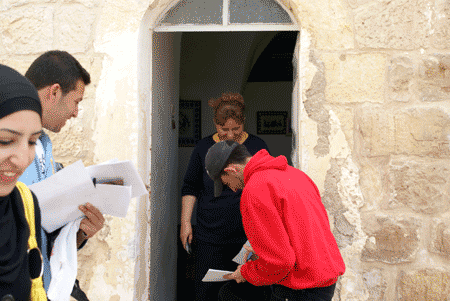
Signing contract for donation for Peoples Museum
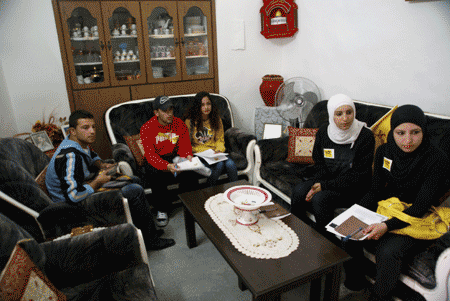
Visiting a family

The Plowman

The Folksinger Nadia Qatalo performs with songs and dances
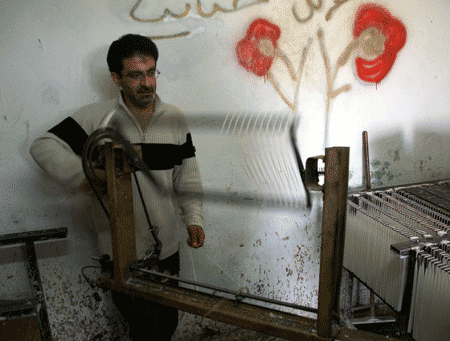
The Candleman with his selfinvented candle machine

A refugee from 1948, Aysha Abu Khaled, tells her story
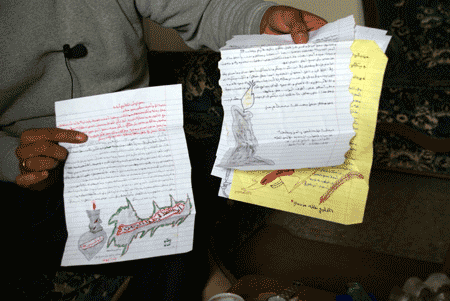
Letters from the jail
